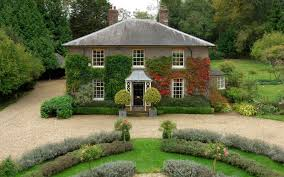Today we enjoy all the creature comforts including central heating in our homes, but did you know that it was the Romans who invented a kind of ancient system of central heating? Known as hypocausts, the system worked by raising a rooms floor off the ground on a set of stone pillars to filter out hot air and smoke through holes leading to a central furnace. This supplied a constant and reliable stream of warmth into the house through convection. Yes, an early central heating system!
Smartly, those who built the villas left holes in the surrounding walls to allow smoke to escape safely and travel through flues out onto the roof. The hypocaust was an expensive and time-consuming heating method though as such a large fire required huge quantities of wood to maintain the heat. Therefore, such systems were only found in public baths or villas owned by the wealthy.
It is thought that the genius behind the hypocaust came from Sergius Orata, who was a well-known merchant and engineer. He specialised in the design and construction of the popular Roman bath houses.
The basic and fundamental concepts of the hypocaust system have many similarities with the central heating and underfloor heating systems we have today. The hypocaust is just one example of how useful Roman inventions were to improve living conditions and just how forward-thinking their inventions were at that time.
If this has made you think about checking the health of your own central heating then for all Boiler repair Gloucester needs, visit http://www.hprservicesltd.com/gloucester-boiler-repair-and-servicing/
Gloucester has a rich Roman history and began life as a Roman town. It was the perfect location to settle as it lies at the first place the River Severn can be safely crossed. In approximately 49 AD a fort was constructed to guard the river crossing point at Kingsholm. Later in 64 AD, they built a new fort in what is today the city centre.
About a decade later, the soldiers moved on, but the fort became accommodation for retired soldiers and renamed Glevum. The centre of the city held a forum, market places and public buildings. The Romans were all but gone from Britain by 400 AD and many Roman towns and cities were abandoned.
However, many wealthy Celts had already emulated the Roman way of life and built villas modelled on the Roman style. Wealthy homes were fitted with mosaic floors and hypocaust systems were installed. They would have murals on the walls and even glass in their windows! Of course, the poor had none of these luxury comforts with their main heating coming from simple braziers.




